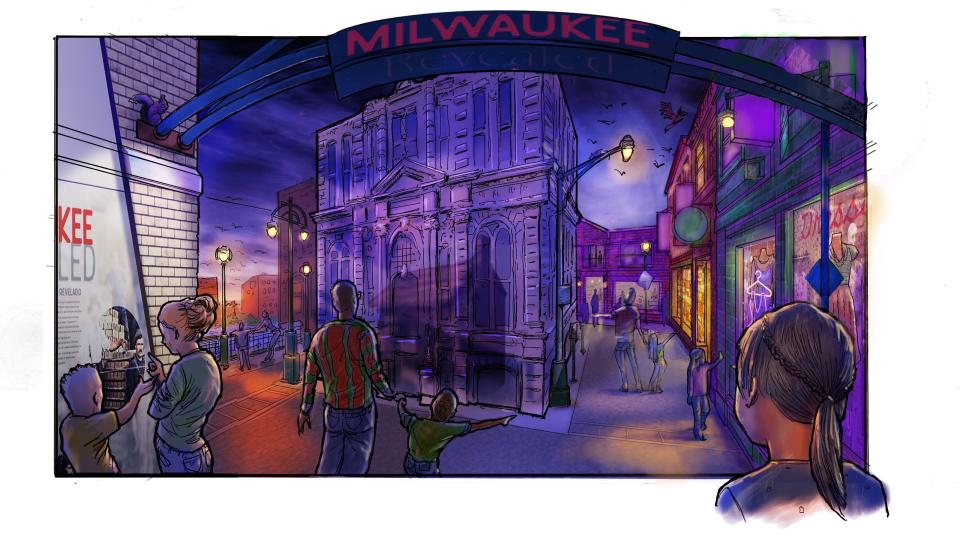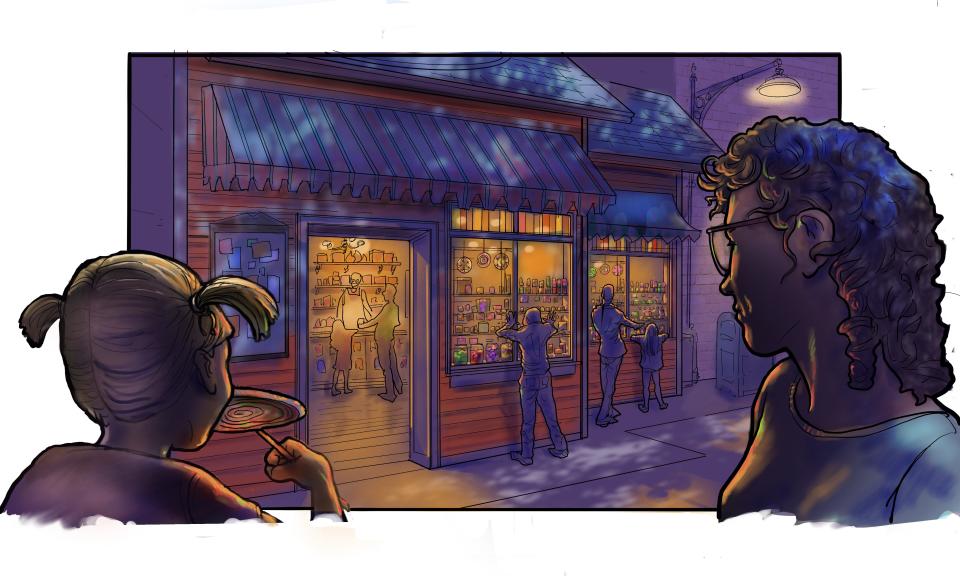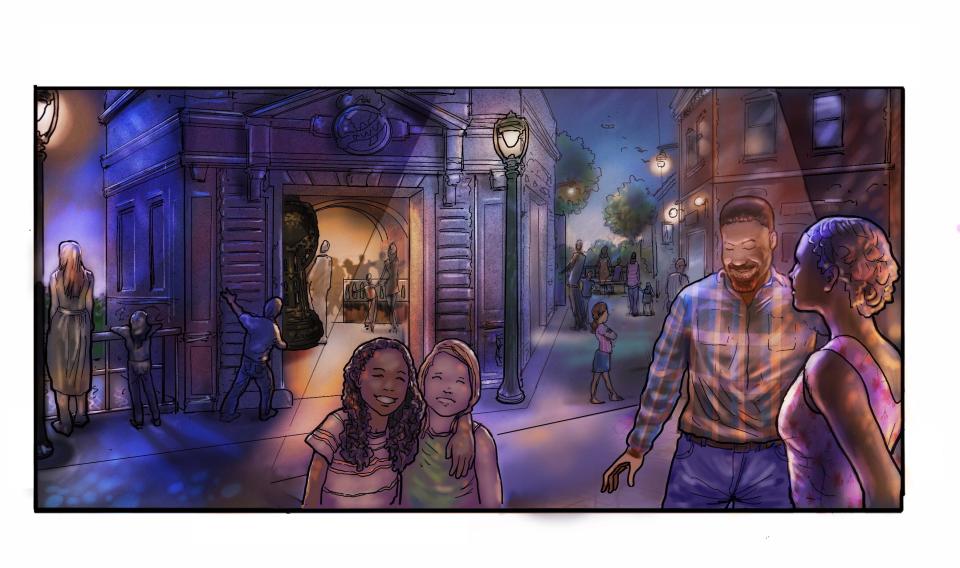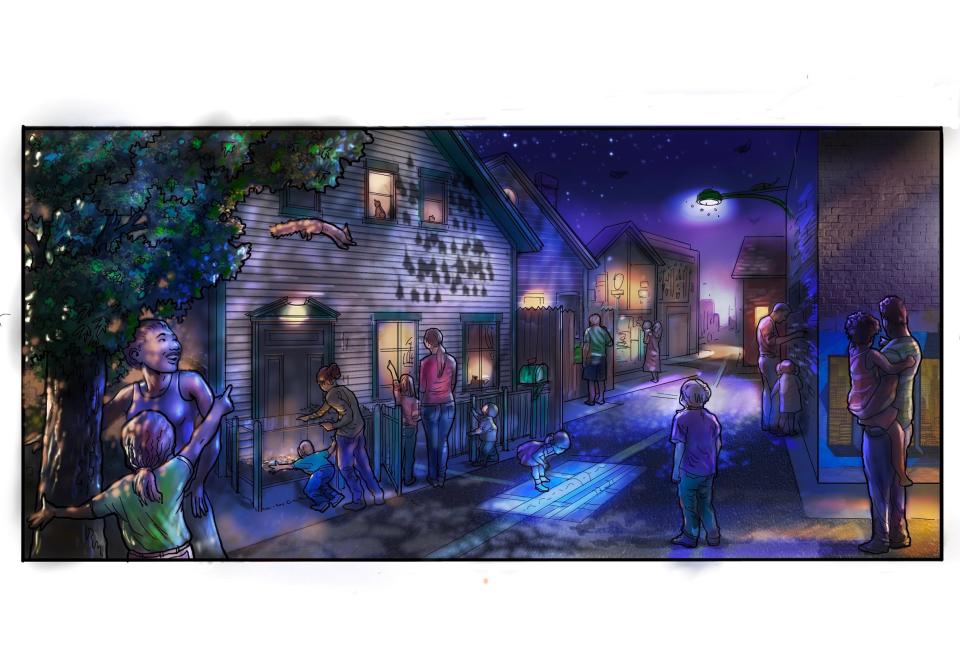The Milwaukee Public Museum reveals some details of the Streets of Old Milwaukee's successor
On Milwaukee Day, the Milwaukee Public Museum announced what will replace the beloved Streets of Old Milwaukee exhibit in the new museum.
And although it's definitely a replacement, it will incorporate a fair amount of the elements of the original.
Earlier this year, many Milwaukeeans expressed their dismay that the Streets of Old Milwaukee exhibit wouldn't be moved wholesale to the new building at Sixth Street and McKinley Avenue. Groundbreaking is expected later this year.
When the uproar began, museum administration responded that deconstructing the elements of the original exhibit "in a way that won’t damage them and using those exact same materials to reconstruct them in a differently shaped building would be nearly impossible, not to mention excessively expensive and time-consuming." But they did promise the new museum would have a walk-through, immersive experience about Milwaukee.

The new gallery — called Milwaukee Revealed — won't focus on Milwaukee buildings at the turn of the 20th century as the Streets of Old Milwaukee and European Village do. Instead, museum officials said Friday, it will feature commercial and residential sections in a streetscape that uses lighting, audio and other special effects to reveal what's behind the surface of the buildings, including what was there before.
RELATED: 60 years ago, Milwaukee also fretted about exhibits not moving to a 'new' Milwaukee Public Museum
Helen Divjak, a designer with the museum's design partner, Thinc Design, described the exhibit as "a new way of experiencing a very familiar exhibit."
Ellen Censky, the museum's president and CEO, explained the pivot from a historic focus, saying that the purpose of the new exhibit is to integrate the stories that the Milwaukee Public Museum is uniquely positioned to tell with its millions of natural and cultural artifacts.
"In this new exhibit, we're looking at the way Milwaukee is now and asking, 'Why is it this way?'" said Censky. "What is it about the land that encouraged the people who came here to come here, and why did they do the things they did when they did come here?"
Although museum staff and designers are still planning exhibits, their April 14 announcement included a few of the exhibits in the gallery's commerce and neighborhoods sections.
What will be the same in the Milwaukee Revealed gallery as it is in the Streets of Old Milwaukee?
Acknowledging the connection Milwaukeeans feel to the Streets of Old Milwaukee, the new gallery, considered a spiritual successor to the current gallery, will include nods to the original, including the twilight setting and the Streets' immersive elements. Milwaukee Revealed will allow people to walk through the gallery and into the buildings, discovering many Easter eggs along the way.
RELATED: Here are 14 'hidden treasures' to look for at the Milwaukee Public Museum
Although decisions haven't been finalized about which parts of the current exhibits will be displayed in the new gallery right away, Censky said that "everything that is inside the buildings of both the Streets and European Village are collection items. Those will all come to the new museum. Some will be repurposed immediately into an exhibit and others will be part of our rotation, but nothing will be bulldozed or put in a dumpster."
There are immediate plans to include the Streets of Old Milwaukee's penny farthing bicycle and Schloemer automobile in the Milwaukee Revealed gallery. And similar to the current exhibit, there will be a candy store where people can shop.

Divjak also noted that there are plans to repurpose many of the elements of the Streets of Old Milwaukee and European Village exhibits, including facades, doors and windows that were salvaged from actual Milwaukee buildings when the original exhibit was created in the 1960s.
Divjak also said the iconic Granny will be coming to the new gallery, but she didn't want to give away plans for some of the other familiar elements of the current exhibits, noting that many will be recognized by visitors as surprise Easter eggs.
"Our intention is that when you walk into any of these new spaces, you'll feel that there's a familiarity, but in an exciting new way to present it," said Censky. "People will look at these exhibits and say, 'Oh, I remember that!' We're not trying to wipe away anything."
Additionally, there will be a virtual-reality experience with both the current Streets of Old Milwaukee and European Village exhibits so people will be able to experience the old exhibits into the future.
What will be in the Commercial area of Milwaukee Revealed?
The Mitchell Building: Visitors will see the fa?ade of the Mitchell Building, the ornate, five-story building on Michigan Street built in 1876. Lighting effects will reveal silhouettes of the buildings and natural life that stood on the same site through history, including the cabin of one of Milwaukee's founders, Solomon Juneau and his wife, Josette.
Inside the building, there will be a new exhibit re-creating the Juneaus' cabin and artifacts to tell the story of their relationship as well as the fur trade and its role in Milwaukee's history.
Storefronts:
Dress shop: There will be a window display where artifacts from the museum's textiles collection will be rotated. Guests can also go inside the shop.
Modern-day frozen custard shop: The store will have artifacts and information about the local dairy industry.
Market storefront: A market will feature rotating collections and artifacts to showcase Milwaukee's different businesses and industries.

Schlitz Palm Garden: The re-creation of one of the popular Milwaukee beer gardens from the late 1800s and early 1900s will feature stories about Milwaukee's beer industry, including artifacts of Polish and German people who provided much of the labor for the city's beer industry, and an explanation of how the city's easy access to water and agricultural products like wheat and hops encouraged the beer market.
Cream City Medical Society: Visitors will enter a pharmacy made from Cream City brick and learn about Milwaukee's history of different healing and medicine traditions, including the story of Milwaukee's first organization of African American physicians established in 1927.
Lapham House: Visitors will enter the "study" of Increase Lapham, one of Wisconsin's first scientists, who was a key figure in the development of natural history museums. The exhibit will include examples of Lapham's scientific writings, drawings and journals, as well as shelves with reproductions of fossils and geological specimens that visitors can touch.
Waterfront: A re-creation of a scenic view of the Milwaukee River also will show what lies beneath the surface of the river, and lighting effects will show how the city's skyline has changed over the years.
What will be in the Neighborhoods area of Milwaukee Revealed?
In addition to the Haymarket Candy Shop, a community streetscape will re-create a Milwaukee neighborhood of houses with much of the architecture commonly found in the city.

When entering the houses, people will be able to see what's behind the walls, roof and floors, as they become transparent to show water and sewer systems, electrical wires and the animals living within the walls. According to Chris Muller of Thinc Design, there also will be crawl-through spaces for kids to get into houses and "see things through new perspectives."
Museum-goers also will be able to see the (fake) animals like bats and squirrels that are part of the urban landscape as well as (real) creatures like spiders and ladybugs within a re-creation of a community garden.
Because people will be able to walk into more buildings and areas of the new exhibit than they can in the existing Streets of Old Milwaukee, Muller estimates that the "walk-around" space in the two exhibits is roughly equivalent, even though the total footprint of Milwaukee Revealed will be smaller than the Streets of Old Milwaukee.
What other exhibit galleries will be in the new museum?
Ground will be broken for the new museum later this year, and Milwaukee Revealed will be one of the museum's five permanent galleries. The others are:
Time Travel, a gallery focused on the planet's deep past, including when dinosaurs roamed the earth;
Wisconsin Journey, a gallery of exhibits focused on geological and cultural history in different regions of the state;
Living in a Dynamic World, a gallery focused on areas and cultures across the world;
Rainforest, an immersive exploration through tropical rainforests.
In addition to the five permanent galleries, there will be a live butterfly exhibit and a planetarium, as well as space for traveling exhibits and for rotating MPM collections that are usually not on display.
Museum officials plan to roll out the details of the remaining exhibits in a series of announcements over the next few weeks, through May 24.
Our subscribers make this reporting possible. Please consider supporting local journalism by subscribing to the Journal Sentinel at jsonline.com/deal.
DOWNLOAD THE APP: Get the latest news, sports and more
This article originally appeared on Milwaukee Journal Sentinel: Milwaukee Public Museum reveals Streets of Old Milwaukee's successor
